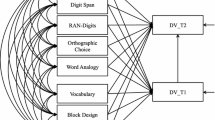Abstract
The present study examined kanji errors in handwriting made by Japanese students and Australian learners of Japanese. First, a cognitive psychological model to explain the production of writing errors was proposed based upon the analysis of 374 writing errors of two-morpheme (kanji) compound words generated by Japanese students in spontaneous sentence writing situations. Despite the common assumption that kanji writing errors may not be related to the sounds of kanji characters (i.e., morphological phonology), the present study found that phonologically-related kanji writing errors were most numerous (60.0%), followed by orthographically-related errors (43.6%) and semantically-related errors (29.7%), including some overlap of these three types. Second, 408 kanji writing errors made by students learning Japanese in an Australian university were analyzed. Unlike the Japanese students, these subjects wrote more non-existing kanji and made orthographically-related mistakes rather than semantically- and phonologically-related errors. This result must be related to the level of kanji writing skills held by learners of Japanese. In light of these results, several suggestions were proposed for the methods of teaching kanji writing.
Similar content being viewed by others
References
Beauvois, M.F. & Derouesne, J. (1979). Phonological alexia: Three dissociations, Journal of Neurology, Neurosurgery, and Psychiatry 42: 115–124.
Cohen, G. (1980). Reading and searching for spelling errors. In: U. Frith (ed.), Cognitive processes in spelling (pp. 135–155). London: Academic Press.
Cook, L. (1981). Misspelling analysis in dyslexia: Observation of developmental strategy shifts, Bulletin of the Orton Society 3: 123–134.
Ellis, A.W. (1994). Reading, writing, and dyslexia: A cognitive analysis, 2nd ed. Hillsdale, NJ: Erlbaum.
Frith, U. (1980). Cognitive processes in spelling. London: Academic Press.
Gerber, M.M. (1984). Orthographic problem-solving ability of learning disabled and normally achieving students, Learning Disabilities Quarterly 7: 158–164.
Hatfield, F. & Patterson, K.E. (1983). Phonological spelling, Quarterly Journal of Experimental Psychology 35A: 451–468.
Higuchi, H., Saitoh, K., Tominaga, M., Shimada, Y., Yamaguchi, J., Motomura, N., Kashiwagi, T. & Yamadori, A. (1996). A single case of multiple sclerosis who showed a peculiar Kanji Alexia. Proceedings of the 20th Meeting of the Japanese Neuropsychological Association, p. 142.
Iwata, M. (1979). Moji-kigougaku kara sinnkeigaku he [Scripts — from symbol to neurology], Sinkeinaika 10: 542–552 (in Japanese).
Jorm, A.F. (1983). The psychology of reading and spelling. London: Routledge and Kegan Paul.
Joshi, R.M. & Aaron, P.G. (1991). Developmental reading and spelling disabilities: Are these dissociable? In: R.M. Joshi (ed.), Written language disorders (pp. 1–24). Dordrecht: Kluwer Academic Publishers.
Matsuda, M., Showtenmoku, H., Nakamura, K, Nakatani, Y. & Suzuki, N. (1996). A case study of Alexia with left temporal lobe lesion. Proceedings of the 20th Meeting of the Japanese Neuropsychological Association, p. 138.
Morton, J. (1969). The interaction of information in word recognition, Psychological Review 76: 165–178.
Nelson, H.E. & Warrington, E.K. (1974). Developmental spelling retardation, British Journal of Psychology 65: 265–274.
Seymour, P.H.K. (1973). A model of reading, naming and comparison, British Journal of Psychology 64: 35–49.
Tamaoka, K. (1991). Psycholinguistic nature of the Japanese orthography, Studies in Language and Literature (Matsuyama University) 11(1): 49–82.
Tamaoka, K. & Hatsuzuka, M. (1995). Kanji niji jukugo no shori ni okeru kanji shiyou hindo no eikyou [The effects of Kanji printed-frequency on processing Japanese two-morpheme compound words], The Science of Reading 39: 121–137 (in Japanese with a substantial English summary).
Tamaoka, K. & Hatsuzuka, M. (1997). Hiragana to katakana no shori ni okeru kankaku-benbetsu oyobi kankaku-shikibetsu kinou [Sense-discriminative and sense-determinative functions in the processing of Japanese hiragana and katakana], The Science of Reading 41: 15–28 (in Japanese with a substantial English summary).
Temple, C.M. (1985). Developmental surface dysgraphia: A case report, Applied Psycholinguistics 6: 391–406.
Yamadori, A. (1985). Shinkeisinrigaku nyumon [Introducing neuropsychology]. Tokyo: Igakusyoin (in Japanese).
Author information
Authors and Affiliations
Rights and permissions
About this article
Cite this article
Hatta, T., Kawakami, A. & Tamaoka, K. Writing errors in Japanese kanji: A study with Japanese students and foreign learners of Japanese. Reading and Writing 10, 457–470 (1998). https://doi.org/10.1023/A:1008014811683
Issue Date:
DOI: https://doi.org/10.1023/A:1008014811683




